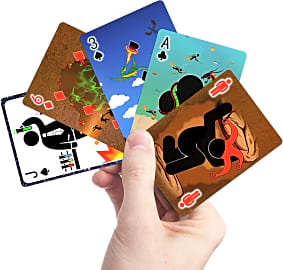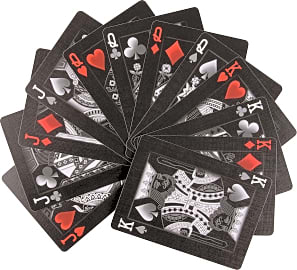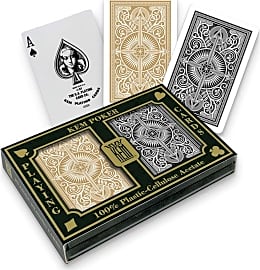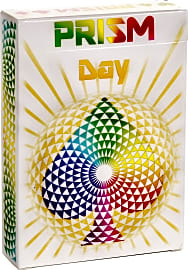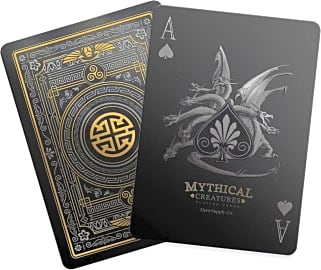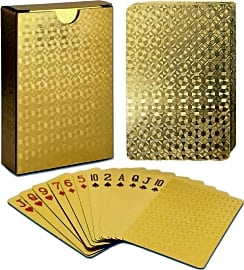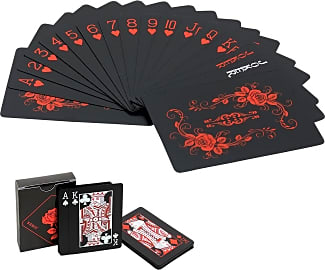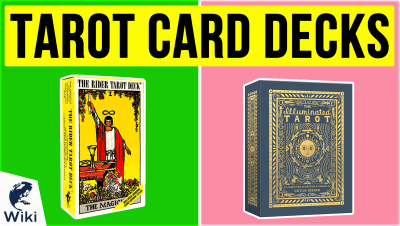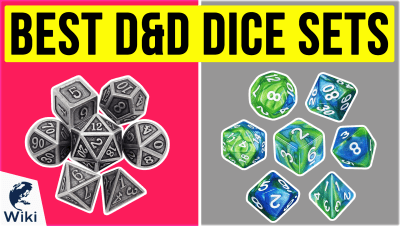The 10 Best Luxury Playing Cards

This wiki has been updated 40 times since it was first published in October of 2016. Want to add a touch of elegance to your next poker night? Then try picking up a pack of these luxury playing cards. Coming in a wide variety of impressive designs, from understated black to vivid rainbow colors to flashy metallics, they may even distract your fellow players long enough for you to win a hand or two. Made with quality materials, they feel smooth and glide well. When users buy our independently chosen editorial recommendations, we may earn commissions to help fund the Wiki.
Editor's Notes
October 22, 2020:
We decided to remove the Joker and the Thief White Gold because of availability concerns. We also got rid of the JoyOldElf 24K due to complaints about the foil flaking off, and replaced it with the EAY 24K, a popular choice bearing a similar attractive gold pattern. We've also added the Gent Supply Mythical Creatures because of its original twist on the four suits and its attractive, highly differentiated art.
December 04, 2019:
Because "luxury" can mean different things to different people, we have looked for a range of options that run the gamut from opulent to minimalist. At the more eye-catching end of this spectrum, we still like the Theory11 Monarch and the Joker and the Thief White Gold. They are richly styled and sure to get you noticed. They're also made with top-notch materials you can count on. We still like the Ellusionist Shadow Masters, too, but there are occasional issues with the coloring or finish chipping, so if you are really hard on a deck of cards, you might find that they don't remain pristine as long as some others. And although we like the look of the Day of the Dead, they're simply too hard to play with, so we opted to remove them.
As for those that are elegant but less extravagant, we selected the Areaware Minim. They don't have gold foil, crazy graphics, or any other over-the-top features; instead, they use a minimalist design that is enticing even without heavy embellishment. We like the KEM Arrow Black and Gold, as well, which will add a touch of class to your next game night and have you ready to break out your poker chip set in no time.
Special Honors
MPC Custom If you have your own ideas about design and elegance, you might go for a deck of MPC Custom, which, as the name suggests, can be designed to your specifications. You can use them as invitations, keepsakes, or party favors, too. makeplayingcards.com
Pendleton Set of 2 Lovers of bright graphics will appreciate the Pendleton Set of 2, which feature two bold, iconic Pendleton patterns. And unlike many, they come in a canvas pouch that snaps closed, so you can travel with them but not worry about scuffing and damage. pendleton-usa.com
Scully & Scully Gold When it comes to luxury, these Scully & Scully Gold have it in spades — and diamonds, hearts, and clubs, too, of course. They're handmade and ship in a handsome leather case, making this an excellent gift for a discerning collector. scullyandscully.com
A Brief History Of Playing Cards
From Egypt, cards moved into Europe, and by 1418, German artisans were using woodcuts to mass-produce paper decks.
Before playing cards came along, people found it much harder to lose money quickly, and it was nearly impossible for magicians to read your mind.
Luckily, that all changed around the 9th century C.E., when Chinese inventors came up with the concept of woodblock printing. This led to the creation of multiple card games, including something called "the leaf game," which was popular among royal members of the Tang Dynasty.
Suits and numerals wouldn't come along until the late 13th century, and some historians believe that they actually functioned as currency in addition to entertainment. The idea was that the cards had their monetary value printed on them, and they could be used as play money until they could be exchanged for the real thing, since gambling was illegal at the time.
Soon, cards spread across the Asian subcontinent and into the Middle East. In fact, the oldest known surviving cards actually come from Egypt, including a near-complete pack that dates back to the 15th century. These decks already used 52 cards divided into four suits: swords, cups, coins, and polo sticks.
From Egypt, cards moved into Europe, and by 1418, German artisans were using woodcuts to mass-produce paper decks. These were hand-painted after printing, and the face cards used portraits of current royalty. By the end of the century, however, cardmakers had transitioned to using historical figures for those portraits, and many decks began sporting clubs, spades, diamonds, and hearts for suits.
About two centuries later, the values and suits of the cards moved to the corner edges, allowing players to hold them in a one-handed fan shape. Manufacturers switched from sharp corners to rounded around this time as well, as sharp corners get worn out easily (and that ups the risk of revealing your cards in the middle of a big bluff).
From there, cards became smaller and more durable, until they eventually transformed into the familiar plastic-coated decks we know and use today. Their design hasn't changed much in the past 100 years or so, but who knows what the future might hold?
Actually, who cares what the future holds? We just want to know what you're holding.
Do You Really Need A Luxury Pack?
If you only play the odd game of solitaire or maybe a spirited round of Go Fish when your nieces and nephews come over, you may not see the need for a luxury pack of playing cards. After all, the cheap decks have all the same cards, right?
While this is true, it also misses the point. There are several benefits to spending an extra few bucks on a quality pack, especially if you play frequently.
Of course, while this isn't something you should admit to, busting out a premium pack can be a great way to show off in front of guests.
The biggest advantage is that more expensive cards are usually more durable. They're made of higher-quality materials, and can stand up to more abuse (although the type of person willing to splurge on luxury cards typically isn't the type of person to mistreat them). If you play regularly, getting a good deck might save you money in the long run, as cheap packs can get worn out easily.
Also, superior cards just feel better. They're easier to shuffle, they fly smoothly off the top of the deck during a deal, and they have a wonderful texture. This obviously isn't something that you just have to have, but once you experience it, it's hard to go back to the rough, cumbersome variety. Like classy chips, they make the game run with fewer hitches.
Of course, while this isn't something you should admit to, busting out a premium pack can be a great way to show off in front of guests. Many of them have intricate designs or colors, so your buddies will be able to instantly recognize that you appreciate the finer things in life — and that you're serious about your cards.
That alone should provide you a few opportunities to bluff successfully on the river.
The Art Of The Deal
Shuffling and dealing are two things that many people are hesitant to do for fear of looking foolish, but getting those skills down will make it easy to impress your guests at the next poker night. Or you could just cheat and get an automatic shuffler, but where's the fun in that?
The most impressive shuffle is probably the riffle shuffle, which is where you mix the cards and then bridge them so that they fall together with a satisfying rustling sound. Fortunately, it's relatively easy to do.
The rest of your fingers should be evenly spaced around the deck, giving you a nice, firm grip.
Start by cutting the deck in half, then put your thumbs at the the top of each one. The rest of your fingers should be evenly spaced around the deck, giving you a nice, firm grip. Using your thumbs, lift just the corner of each card, being sure that you alternate the order in which a card from each half is shuffled. Only the corners should be mixed at this point, with the rest of the cards sticking out.
Once you've gone through all the cards, bend the cards while you keep your thumbs on the top. As you release the pressure with your thumbs, the cards should cascade down. Not only is this impressive, but it's also a great way to ensure a random permutation of the cards.
Now it's time to deal. Put the deck in your non-dominant hand, with your thumb on top and the other four fingers lining the opposite side. You want to be able to easily slide the top card off the deck with your thumb.
Keep your other hand close to the deck. As you slide each card off, catch it with the thumb, ring, and index fingers on your dominant hand. Then, while holding it with your thumb and index finger, use your ring finger to flick it at your intended target. If done properly, the card should fly quickly and decisively through the air without becoming exposed.
All of this takes practice, of course. Just be careful how much you show off, or else your friends might want you to shuffle and deal all the time...


